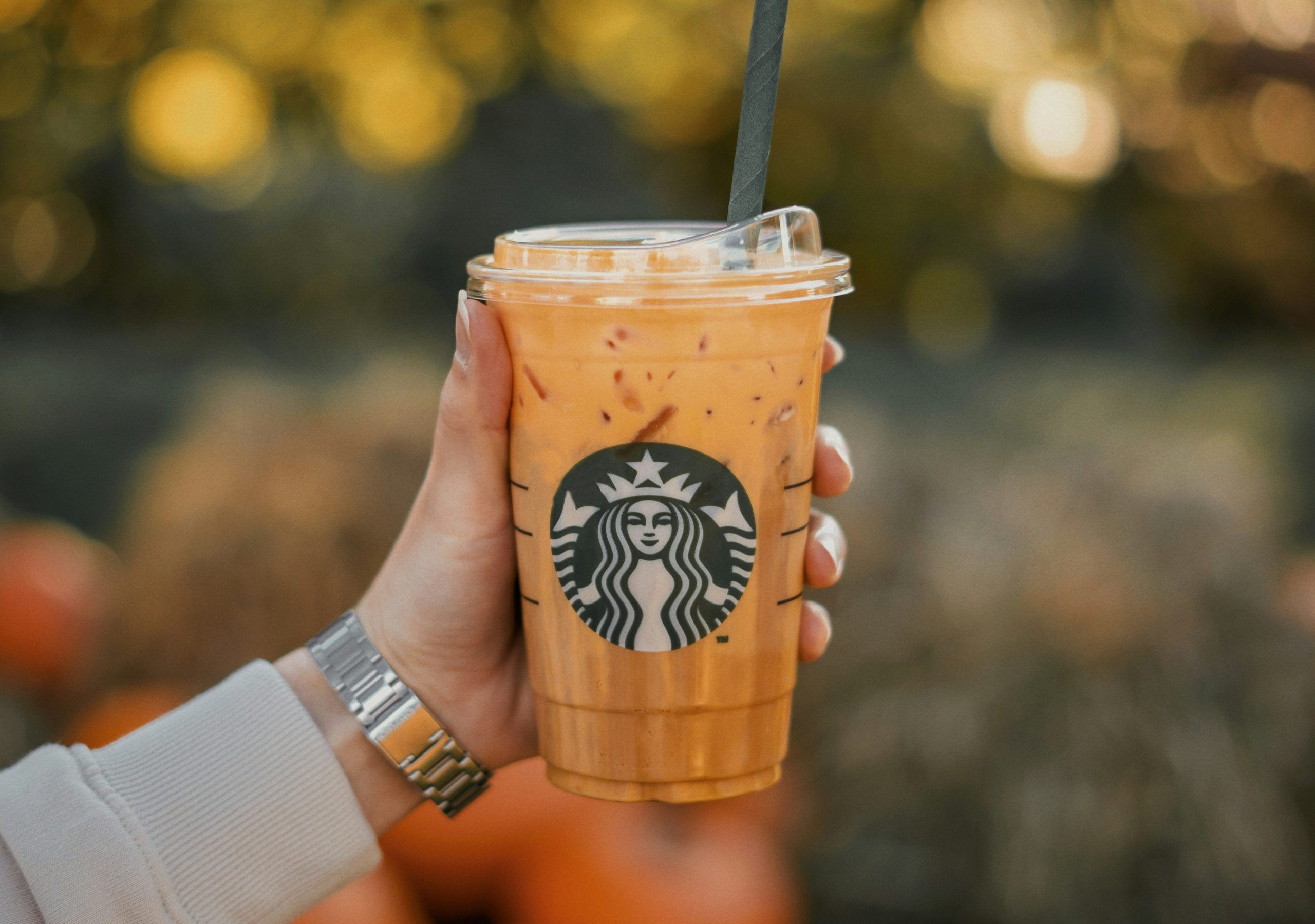Whether you dread or love it, Starbuck’s pumpkin spice latte—or PSL— is an emblem of fall in the Western Hemisphere. Not only is it Starbucks (SBUX)’ most popular seasonal beverage, but the annual release of the PSL marks the “unofficial start of fall” for many. When Starbucks first introduced the drink in 2003, few could predict the cultural phenomenon the seasonal specialty would become. Much of its lasting popularity is owed to Starbucks’ marketing and advertising of the drink, which has evolved greatly over the two decades since its launch.
By 2003, Starbucks had already found great success with its holiday drinks like the peppermint mocha and was hunting for a fall specialty product. The product development team landed on a combination of pumpkin piece spice syrup and a latte, and the PSL was born. That fall, Starbucks launched the drink in 100 select stores nationwide, and it was an immediate success. The following year, the company expanded the launch to all its U.S. and Canadian stores.
Since its launch, Starbucks has reportedly sold over 424 million PSLs, around 20 million cups each year. The drink is far from original now, but the mystery surrounding its launch date, which usually falls in the last week of August but varies slightly every year, always helps generate buzz around it. (This year’s PSL was launched on Aug. 22.)
Over time, Starbucks has expanded its fall menu with new exclusive drinks each year. None of the drinks has outpaced the iconic PSL, but the additions keep an element of mystery to the annual launches. The fall menu also reinforces Starbucks’ goal to sell the PSL not just as a drink but as an entire fall experience.
The evolution of Starbucks’ marketing strategy
Compared to other major consumer brands at the time, Starbucks spent considerably less on marketing in the early 2000s. From 2000 to 2005, Domino’s Pizza, Inc. spent $1.3 billion on advertising, while Starbucks spent only $291.5 million. Starbucks didn’t even run a national television campaign until 2007.
Much of Starbucks’ early marketing centered around generating conversation around the company. It regularly hosted and sponsored events that brought together everyone from celebrities through elaborate bashes in Miami to ordinary customers who received free drinks during special promotions. In particular, association with celebrities vastly boosted the brand’s popularity. Paparazzi photos of celebrities like Britney Spears, Paris Hilton and Lindsay Lohan carrying the signature Starbucks cups splashed across gossip magazines and sites throughout the early 2000s. Starbucks actually paid these high-profile celebrities to be spotted with the cups, positioning the brand as a fashion statement and even a lifestyle rather than just a coffee chain.
Starbucks—and its iconic green logo—was also frequently spotted in popular media—from prime-time television shows like The West Wing to blockbuster movies like The Devil Wears Prada. According to the Seattle Times, Starbucks didn’t even have to pay for those product placements.
In more recent years, Starbucks’ PSL marketing strategy has centered around social media. At one time, Starbucks actually considered discontinuing the PSL to keep their product line “new and fresh,” but when Facebook and Twitter took off around 2006, the company found that the PSL soared to new popularity when customers began sharing their love for the drink on social media. The company’s use of social media hype to promote the PSL mimicked its previous strategy of mostly word-of-mouth, often responding to or sharing users’ content rather than creating its own.
In 2014, the latte emerged as a standalone character, known as “The Real PSL,” on social media, launching its own accounts on Facebook, Instagram, Twitter and Tumblr. The accounts capitalized on the pumpkin spice craze by connecting with real customers and personifying the drink into a celebrity voice. On Twitter, for example, over 99 percent of The Real PSL’s posts were personalized replies to tweets by other users, often incorporating witty remarks and pop culture references. These efforts were so successful that The Real PSL’s Tumblr account won a Shorty Award in 2015, where its Twitter account was also a finalist.
Starbucks’ social media marketing looks a lot different today. The company has retired the @therealpsl handle on all social media platforms and switched to Starbucks’ verified corporate accounts for the PSL’s promotion. Starbucks has also collaborated with celebrities to create custom drinks that are cross-promoted on social media. In 2022, the company partnered with Taylor Swift, following the release of Red (Taylor’s Version), and produced a video in which the singer reads a fall-themed poem, referencing loving “pumpkin-flavored stuff” as she sips from a Starbucks cup.
This year, Starbucks has fully embraced short-form videos. On TikTok and Instagram Reels, the company posted various clips teasing the launch of the PSL and the fall menu. “These days, in the era of TikTok and Instagram Reels, customers share their excitement about fall and their first PSL sips of the season with video reviews and tributes,” read an official Starbucks statement last year honoring the PSL’s 20th anniversary.
@starbucks Pick up, pumpkin.

